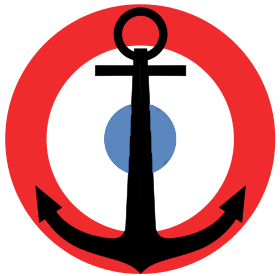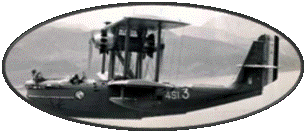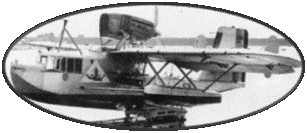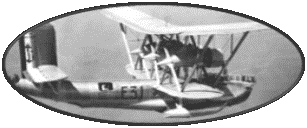 |
Site en Français
|
|
History
of the Ship
Built in December 1932 in
Brest, the Dunkerque battleship was launched on October 2, 1935.
It was designed to fight against German pocket battleships. These
are limited to a maximum tonnage of 10,000 tons by the Treaty of
Versailles. Dunkerque, like its sister-ship, Strasbourg, is limited
to 35,000 tons by the 1922 Washington Treaty
The main artillery of Dunkerque
is characterized by two quadruple turrets of 330 mm, on the front
part of the ship. This provision, characteristic of the French line
ships, allows to use all its firepower, offering the least possible
area to the enemy. The secondary armament consists of 16 x 130mm
cannons that can be used for air defense and 8 x 37mm guns
Dunkerque is equipped with
a seaplane hangar and a 3.5 tonne catapult. The ship also has a
crane to lift the seaplanes on board.
On September 1, 1938, Dunkerque
entered into service and became flagship of the Atlantic squadron,
joined May 1, 1939 by Strasbourg. These two ships of line constitute
with the 4th division of cruisers and the 1st light squadron, the
Force of Raid. Accompanied by the British heavy cruiser, HMS Hood,
Dunkerque participated in the search for the German battleships
Sharnhorst and Gneisenau at the end of the year 1939.
After a passage in Brest
to cover troop transports leaving for Norway, Dunkerque anchored
on April 27, 1940, in the port of Mers-el-Kebir. But after the armistice
of June 24, 1940, the English attack on July 3 and 6, French ships
present in the port, to prevent them from falling into the hands
of the Germans. The losses are high: 210 men will be killed. On
August 8, 1940, the building bailed, left Mers-El-Kebir February
16, 1942, to be repaired in Toulon. He will be back on September
27, 1940. He left Toulon to join Mers-El-Kebir where his repairs
will continue. He will return to Toulon on February 20th
On November 27, 1942, after
the invasion of the free zone by the Germans, Dunkerque scuttles
in the port of Toulon to escape the capture. He was again damaged
in 1944 by American bombing, and was finally sentenced on September
15, 1955. In September 1958, he was sold to a demolition company
in Toulon before being dismantled.
Technical
characteristics of the Ship
|
Type
|
Ship of line or Battleship
|
Launching
|
October
2,1935
|
|
Length
|
214 m
|
Width
|
30.80 m
|
|
Draught
|
9.17 m
|
Range of action
|
7500 miles at 15 knots
3600 miles at 31 knots
|
|
Standard weight
|
26500 Tons
|
Full load weight
|
35500 Tons
|
|
Maximum speed
|
30 knots.
|
Crew
|
81 Officers
1300 Men of crews
(up to 2000 men
in wartime)
|
|
Propulsion
|
4 Parsons
steam turbines driving 4 four-blade propellers and 6 boilers
stamped at 27kg: total power of 130000 HP
|
|
Armoring
|
Belt : 225 mm
Upper deck: 115mm
- Lower deck: 40mm
Main turrets: 330mm
on front side- 310mm on top and 250mm on sides
Secondary turrets:
135 on front side - 90mm on sides
|
|
Armament
|
2 quadruple turrets
with 330mm gun - Maximum range: 41500 m
6 130mm guns distributed
in 5 turrets - Maximum range: 20800 m
10 37mm guns distributed
on 5 double sharpeners
32 13.2mm Hotchkiss
machine guns distributed on 8 quadruple mounts
|
|
Aviation
|
3 seaplanes
1 catapult of 3.5 tons with movable compressed air on
the rear beach
1 lift for placing
seaplanes on the catapult
1 crane for seaplane
recovery
Hangar able to house two seaplanes
|

Aviation
on board
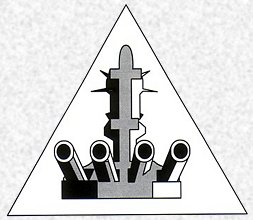
Emblem
of the HS2 Squadron, which will be found on the Dunkerque and Strasbourg
Battleships, of the Atlantic Wing
Squadron
HS2 :
This unit
was born on October 1, 1938, from the separation of the 7S4 into
two squadrons: The HS2 and the HS4
The HS2 groups the aircraft,
Gourdou-Lesser GL812, then Loire 130, embarked on the ships of
line of the Atlantic Wing, the battleships: "Dunkirk",
"Lorraine" and "Strasbourg"
Squadron
HC2 :
This unit will have
a very short existence ... Created in August 1940, the squadron
receives Loire 210, float planes embedded. They must provide
aerial protection for Wing ships of the Atlantic. But this concept
is outdated since its creation: the Loire 210 is a aircraft
with any performance, unreliable and with significant structural
defects
From November 1939,
the Loire 210 are disembarked from all the ships of line and
the Escadrille HC2 is dissolved. Staff are transferred to
AB3 Squadron, then in training
|
Aircrafts
assigned to the Ship
|
|
Type
of aircrafts
|
Serial
Number
|
Registration
|
Comments
|
|
Loire
130
|
|
Loire
130
|
2
|
HS2-2
|
Assigned
to the Dunkerque Battleship. On September 7th, 1939, the plane
disappears with its crew:Chief Bosun’s Mate COADIC, Sub-Lieutenant
DE-TESSIERES, Petty Officer 1st Class ROCHEFORT, Petty Officer
1st Class JACQUIAUD, Petty Officer MONNET. |
|
Loire
130
|
5
|
HS2-1
|
Assigned
to the Dunkerque Battleship. Destroyed by accident on September
8, 1939 following a ditching. |
|
Loire
130
|
69
|
|
Assigned
to the Dunkerque Battleship. |
|
Loire
130
|
70
|
|
Assigned
to the Dunkerque Battleship. |
|
Loire
210
|
|
Loire
210
|
3
|
HC2-7
|
Assigned
to the Dunkerque Battleship.He will be withdrawn from service
in November 1939 |




Aviation
Personnel
|
Pilots
and Personnel Aviation of the Ship
|
|
Name
|
Rank
|
Function
|
Comments
|
Civil
Statut
|
|
Citations
|
|
Chief
of Flight Aviation Service
|
| LEPELTIER
Pierre |
Lieutenant
|
Chief of
Flight Aviation Service
|
Chief
of Flight Aviation Service
from July 10,1938 to May 1940 |
|
|
|
| EVIN
Pierre |
Sub-Lieutenant
|
Pilot and
Chief of Flight Aviation Service
|
Chief
of Flight Aviation Service
from June 1940 to August
1940 |
|
|
|
|
Crew
|
| COADIC
Marcel |
Chief Bosun’s
Mate
|
Radio
|
Killed,
by accident, on September 7, 1939 aboard the Loire 130 HS2-2.
The bodies of the crew will never be found. This will probably
be the first deaths of Naval Aviation for World War II |
Born on
6 February 1909 at Roche-Jaudy (22 - Côtes d'Armor)
Killed on 7 September 1939 off Brest
|
|
|
| DE-TESSIERES
Jean - Marie |
Sub-Lieutenant
|
Observer
|
Killed,
by accident, on September 7, 1939 aboard the Loire 130 HS2-2.
The bodies of the crew will never be found. This will probably
be the first deaths of Naval Aviation for World War II |
Born on
30 June 1911 in Laprade (16 - Charente-Maritime)
Killed on 7 September 1939 off Brest
|
|
|
| JACQUIAUD
Rémy - Edouard |
Petty Officer
1st Class
|
Mechanic
|
Killed,
by accident, on September 7, 1939 aboard the Loire 130 HS2-2.
The bodies of the crew will never be found. This will probably
be the first deaths of Naval Aviation for World War II |
Born on
11 August 1908 in Arces (17 - Charente)
Killed on 7 September 1939 off Brest
|
|
|
| LE-BIHAN |
Petty Officer
|
Pilot
|
|
|
|
|
| MONNET
Fernand |
Petty Officer
|
Radio
|
Killed,
by accident, on September 7, 1939 aboard the Loire 130 HS2-2.
The bodies of the crew will never be found. This will probably
be the first deaths of Naval Aviation for World War II |
Born on
5 June 1913 in Saint-Seine sur Vingeanne (21 - Côte d'Or)
Killed on 7 September 1939 off Brest
|
|
|
| ROCHEFORT
Pierre |
Petty Officer
1st Class
|
Pilot
|
Killed,
by accident, on September 7, 1939 aboard the Loire 130 HS2-2.
The bodies of the crew will never be found. This will probably
be the first deaths of Naval Aviation for World War II |
Born on
4 June 1910 in Gerbéviller (54 - Meurthe et Moselle)
Killed on 7 September 1939 off Brest
|
|
|
Aviation
Losses
|
Crew
members killed
|
5
|
COADIC
Marcel Chief Bosun’s Mate
|
September
7,1939
|
| DE-TESSIERES
Jean Sub-Lieutenant |
September
7,1939
|
| JACQUIAUD
Rémy Petty Officer 1st Class |
September
7,1939
|
| MONNET
Fernand Petty Officer |
September
7,1939
|
| ROCHEFORT
Pierre Petty Officer 1st Class |
September
7,1939
|
Sources
- The
dates and places of birth of the Group's personnel are taken mainly
from the site : "Mémoires
des Hommes"
- Hors série AVIONS No1
- "L'Aéronautique Navale Française de Septembre
1940 à Juin 1940" by L. Morareau - Editions LELA Presse
- Aéro-Journal No18
"L'Aéronautique Navale en Guerre 1939-1940": by Christian-Jacques
EHRENGARDT - Editions Aéro-Editions
- ...

|
